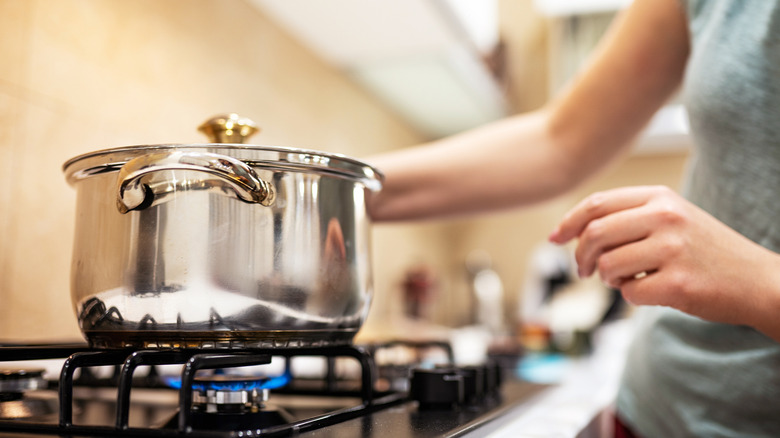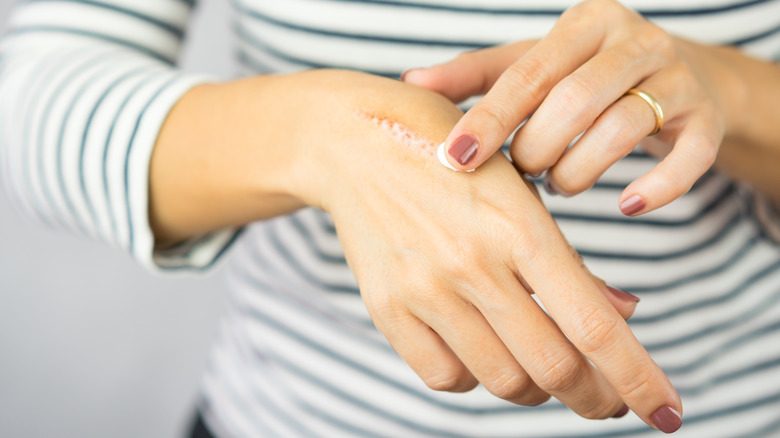Never Put Ice On A Burn. Here's Why
Most people know the feeling of the searing sting after accidentally touching a hot stove or curling iron. First-degree burns are quite common and not as serious as higher-degree burns but they can still be painful and even lead to scarring if not treated properly, according to the American Academy of Dermatology (AAD). While your first instinct may be to grab an ice cube and place it on the burn to find relief, experts say this isn't a good idea. "It makes you feel better, but the ice could lead to a deepening of the burn because it causes constriction of the blood vessels," Angela Gibson, M.D., Ph.D., a burn specialist at UW Health's Burn Center, said in a post on the organization's website.
While ice is a no-go, experts recommend running your burn under cool water or applying a wet cold compress for about 10 minutes or until the pain lessens. Avoid putting butter, toothpaste, or ointments on the burn, as these can lead to infection. The AAD recommends applying petroleum jelly two to three times a day. If a blister forms, do not pop it. Keep it covered with a nonstick, sterile bandage and allow it to heal on its own. An over-the-counter pain reliever like ibuprofen or acetaminophen can help ease pain and inflammation. After the burn heals, be sure to protect the area from the sun. Use a broad-spectrum sunscreen with an SPF of 30 or higher to help prevent scarring.
When to seek medical care for a burn
How do you know when you can treat a burn at home or when you should seek medical care? "If the pain is out of control and you're not able to clean it thoroughly, or if the burn is on your face/neck, hands, feet, or over a joint, you should see a doctor," Dr. Gibson says on UW Health's website. On the other hand, the absence of pain can also signal a worrisome problem. Deep burns usually don't have any sensation and will be pale, yellow, or white in color. It will also feel drier than less severe burns which are more moist or pink.
Severe burns may require a procedure called skin grafting, in which healthy skin is transplanted to the affected area from another part of your body. If you're unsure if you need medical treatment, call your doctor or local burn center for advice. If the person burnt is an infant or elderly person, take them to the emergency room right away.


